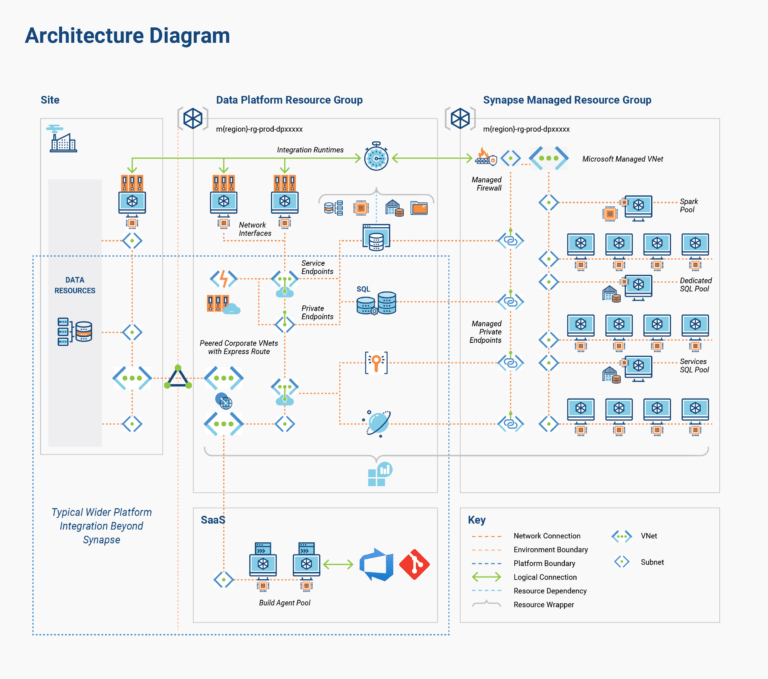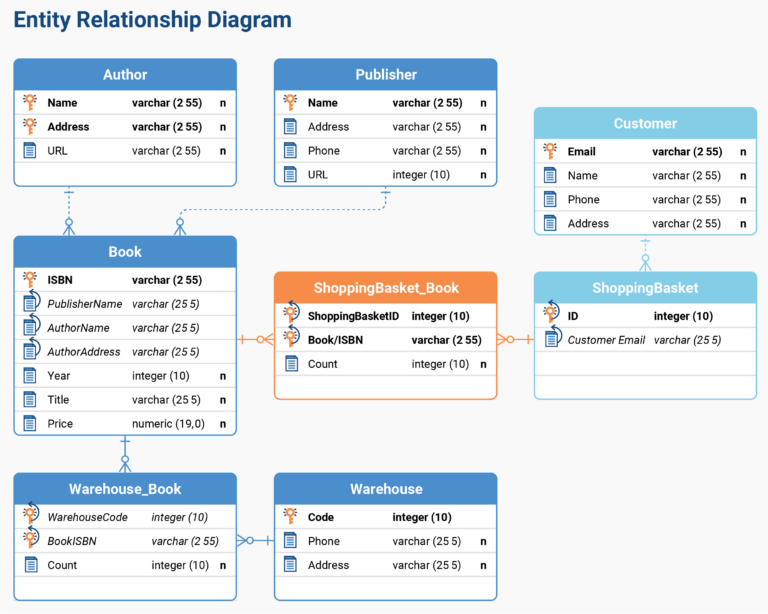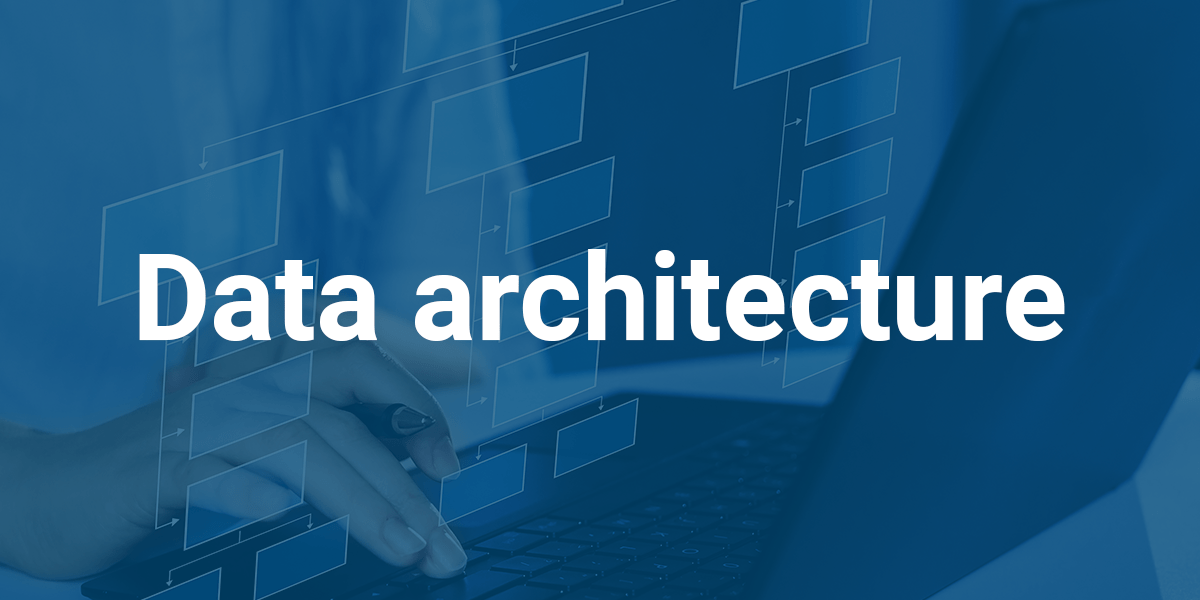How businesses approach data has fundamentally changed in recent years. Many organizations are turning to modern data architectures as a means of strengthening their data management strategies.
This article will talk about data architecture, its critical role in driving business success, and practical strategies for implementing a successful data architecture framework.
Data Architecture: Table of Contents
What is Data Architecture?
Data architecture provides a solid foundation for managing data at every stage of its lifecycle. It outlines the company’s data strategy, describing the path data takes from production to consumption. This includes all intermediate activities, such as transformation and storage.
With a schematic for data flow through data storage systems, companies can outline data management practices that enhance data value and optimize business outcomes.
Why is Data Architecture Important?
A data architecture translates business requirements into data and system requirements. Organizations need a data architecture that supports all aspects of their operations — one that effectively aligns their business objectives and organizational strategy with their data management.
A strong data architecture helps organizations:
- Deliver superior data quality,
- Define, demonstrate, and distribute an organization-wide data strategy, and
- Plan for continuous improvement.
This underscores its value to a company’s existing data.
Harvard Business Review cited that less than half of organizations’ structured data is used for decision-making. Therefore, data isn’t in short supply. The culprit is disorganized data, which complicates data analysis. Without proper data architecture, numerous inefficiencies, such as data silos and security risks, can result.
Furthermore, companies need proper data architecture to leverage enterprise data management tools well. A strategy for storing, transmitting, and receiving data must be in place for every application.
Creating a Strong Data Architecture Strategy
Establishing data structures upfront is vital for ensuring consistency, accuracy, and reliability when managing data. It starts with having a data architecture strategy that takes into account the following factors:
Data
Data architecture requires identifying the origin of each data element within a system landscape. Doing so helps map its journey and determine its relevance across various systems and processes.
Organizations need to design a data architecture that detects and rectifies errors as quickly as they come in. This is made possible by having a reliable data integration strategy and platform.
The human element also plays a key role in a data architecture strategy. Clarifying ownership of datasets enhances accountability and data governance. Furthermore, identifying stakeholders who require access to specific datasets for their work can help improve decision-making and issue resolution.
Tools
An organization’s data management landscape includes different tools for processing, storing, integrating, and analyzing data.
After defining the tools needed for enterprise data management, the company needs to establish how data will be stored and transferred between tools.
Systematically introducing these tools is a must. Companies need to prioritize foundational components before moving on to specialized ones. A data architecture strategy ensures that your data management tools are integrated, preventing the creation of data silos.
In the same vein, defining the order and priority of integrations among these tools helps ensure a seamless data flow and system interoperability. Lastly, companies should establish clear ownership of tools for effective management and accountability.
Integrations
A company’s integration strategy must align with its tools, prioritizing the most critical connections to optimize data movement within its ecosystem.
Planning how integrations will be developed and implemented ensures a seamless data flow between different systems and tools. The methods a company chooses can influence the integrations’ compatibility and efficiency.
In addition, knowing how often data will be sent throughout the enterprise data landscape is essential to ensuring that data remains accurate, current, and relevant.
By taking into account all of these factors when creating a data architecture design, companies can guarantee that:
- You’ve laid the groundwork for your enterprise data roadmap.
- There’s no duplicate data stored.
- You are efficiently sharing data among your teams.
- Each data element is validated and has an owner.
- Each tool has a specific function.
Components of A Data Architecture Strategy and Blueprint
Data architecture blueprints are required for tool development and configuration. With this blueprint, enterprise data architects will know how to organize their ecosystem, establishing a solid foundation for data management processes
There are two components that companies need to be familiar with when designing a data architecture: an architecture diagram and an entity relationship diagram.
An architecture diagram illustrates where and how systems exchange information. It depicts data management throughout its entire lifecycle, from consumption to disposal. Designing one leads to better data understanding and management, as well as richer business insight.
Specifically, a system architecture diagram illustrates where each system sits in the ecosystem and how data gets to and from it. This diagram outlines:
- each platform,
- key infrastructure details,
- the types of integrations between each,
- ownership of each system,
- and how data flows from its entry point to its destination.
On the other hand, an entity relationship diagram shows how data is stored and relates across enterprise data management systems. Its role in creating a data architecture blueprint is to form the basis for your data dictionary for each system. This will later serve as the basis of source-to-target mapping documentation, showing which fields originate from which source systems and which ones align with downstream systems. Entities involved include concepts, objects, and people.


Having these two components in place from the beginning is critical to removing silos of data, democratizing the use of your enterprise data, and leveraging it to the fullest extent possible.
Building a Resilient Data Management Foundation
Data architecture focuses on the methods of storing, moving, and accessing data. Therefore, having a robust strategy is key to managing real-time data and becoming more data-driven. System architecture diagrams and entity relationship diagrams should be part of any data architecture strategy.
However, the most effective data architecture involves coordinating many moving parts. Adapting to changing business landscapes also necessitates flexible data architecture strategies. Infoverity supports companies in this regard, which can be further complemented by a comprehensive enterprise data management strategy.
No matter where a business is in its digital transformation journey, Infoverity can help establish a business’ current baseline and struggles, identify business goals, and leverage enterprise data management to hit those targets. Book a consultation call today.




